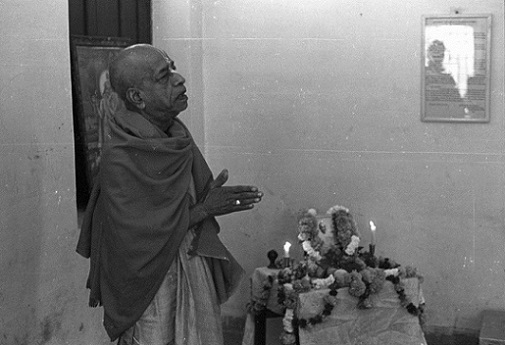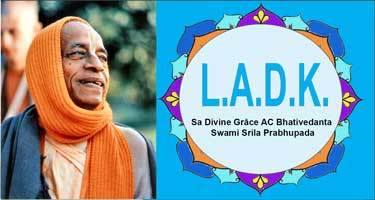
SRIMAD-BHAGAVATAM 7 CHAPTER 9 TEXT 38
itthaṁ nṛ-tiryag-ṛṣi-deva-jhaṣāvatārair
lokān vibhāvayasi haṁsi jagat pratīpān
dharmaṁ mahā-puruṣa pāsi yugānuvṛttaṁ
channaḥ kalau yad abhavas tri-yugo ’tha sa tvam
TRANSLATION
In this way, my Lord, You appear in various incarnations as a human being, an animal, a great saint, a demigod, a fish or a tortoise, thus maintaining the entire creation in different planetary systems and killing the demoniac principles. According to the age, O my Lord, You protect the principles of religion. In the age of Kali, however, You do not assert Yourself as the Supreme Personality of Godhead, and therefore You are known as Triyuga, or the Lord who appears in three yugas.
PURPORT
As the Lord appeared just to maintain Lord Brahmā from the attack of Madhu and Kaiṭabha, He also appeared to protect the great devotee Prahlāda Mahārāja. Similarly, Lord Caitanya appeared in order to protect the fallen souls of Kali-yuga. There are four yugas, or millenniums—Satya, Tretā, Dvāpara and Kali. In all the yugas but Kali-yuga, the Lord appears in various incarnations and asserts Himself as the Supreme Personality of Godhead, but although Lord Śrī Caitanya Mahāprabhu, who appears in Kali-yuga, is the Supreme Personality of Godhead, He never asserted Himself as such. On the contrary, whenever Śrī Caitanya Mahāprabhu was addressed as being as good as Kṛṣṇa, He blocked His ears with His hands, denying His identity with Kṛṣṇa, because He was playing the part of a devotee. Lord Caitanya knew that in Kali-yuga there would be many bogus incarnations pretending to be God, and therefore He avoided asserting Himself as the Supreme Personality of Godhead. Lord Caitanya Mahāprabhu is accepted as the Supreme Personality of Godhead, however, in many Vedic literatures, especially in Śrīmad-Bhāgavatam (11.5.32):
kṛṣṇa-varṇaṁ tviṣākṛṣṇaṁ
sāṅgopāṅgāstra-pārṣadam
yajñaiḥ saṅkīrtana-prāyair
yajanti hi sumedhasaḥ
In Kali-yuga, intelligent men worship the Supreme Personality of Godhead in the form of Śrī Caitanya Mahāprabhu, who is always accompanied by His associates such as Nityānanda, Advaita, Gadādhara and Śrīvāsa. The entire Kṛṣṇa consciousness movement is based on the principles of the saṅkīrtana movement inaugurated by Śrī Caitanya Mahāprabhu. Therefore one who tries to understand the Supreme Personality of Godhead through the medium of the saṅkīrtana movement knows everything perfectly. He is sumedhasa, a person with substantial intelligence.

